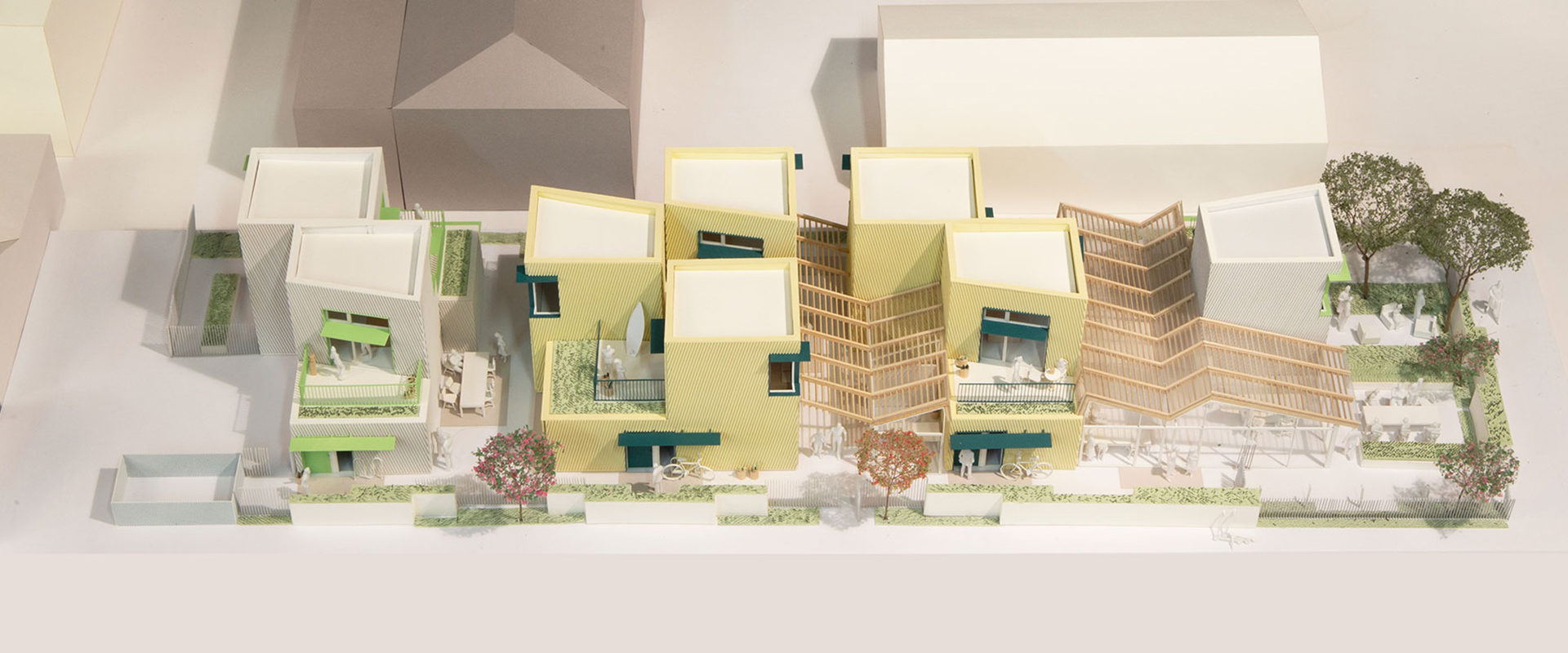- 2019 Architect’s Newspaper Best of Design
- 2019 Progressive Architecture Award
- 2019 AIA/LA Next LA Award
- 2019 A+ Architizer Finalist
Little Berkeley
- Location Santa Monica, CA
- Type Housing
- Area 5,000SF
- Completion 2018
One small contribution to LA’s affordable housing crisis, Little Berkeley is a 5,000- SF, eight- unit complex explicitly for transitional youth: those recently emerged from foster care without a credit history or family network—realities severely limiting their housing options.
Eschewing both the dormitory conditions of typical transitional housing and the normative dingbat courtyard of much of the surrounding residential fabric, Little Berkeley provides each youth individual space to meet their specific needs, accomplished through a precise layout that engages every square inch of the site, creating a unique roof for each unit and reclaiming a portion of the displaced greenspace.
With its innovative utilization of site resources and balance between private and communal space, Little Berkeley offers a promising solution for other housing-precarious groups in LA seeking a safe, affordable place to live.
Site, Program & Social Context
The basic module for the project was generated following conversations with participants in a local program serving transition-age youth. Former foster kids emphasized privacy, security, and social connection as essential domestic characteristics and those became the basis for individual units.
Units were then organized in geometric primitives, providing each resident a space of their own that can be altered to meet their specific needs. Optimized for prefabrication, L-shaped units in two plan configurations provide a public downstairs and a sleeping loft. Large windows at the second level provide natural light and allow the unit to remain open to cross ventilation. The units are arrayed in precise, Tetris-like clusters and clad with factory painted corrugated metal siding rain screen, placed at a slight bias to create a spiraling effect in the spaces between the buildings. The maze-like spaces between these clusters create courtyards and shared living spaces, reinforcing the social program of the project.
Optimized for prefabrication, L-shaped units in two plan configurations provide a public downstairs and a sleeping loft, acknowledging that some of these resident kids may also have kids. Large windows at the second level provide natural light and allow the unit to remain open to cross ventilation.
To keep within the project’s modest budget, kdA decided to build the complex directly on top of the site, avoiding the expense of an elevator that typically accompanies the city’s bias towards podium-based housing.
The program provides comprehensive social services including job placement and counseling. Residents may learn life skills in the shared kitchen through cooking classes. The complex also contains workspace for a full-time social services staffer and for a part-time on-site property manager.
Building Technology & Sustainability
The units are constructed through factory fabricated timber modules at grade with ventilated crawl space. They are clad with factory painted corrugated metal siding rain screens and placed at a slight bias to create a spiraling effect in the spaces between the buildings. The living room is formed by a galvanized steel framing system that supports the triple layer polycarbonate glazing of the site-built greenhouse and solar panel canopy. The project meets the net-zero requirements for the city through a stormwater recovery system and site-generated electricity. High-efficiency environmental systems include hydronic heating from a solar hot water system.
- 2019 Architect’s Newspaper Best of Design
- 2019 Progressive Architecture Award
- 2019 AIA/LA Next LA Award
- 2019 A+ Architizer Finalist









